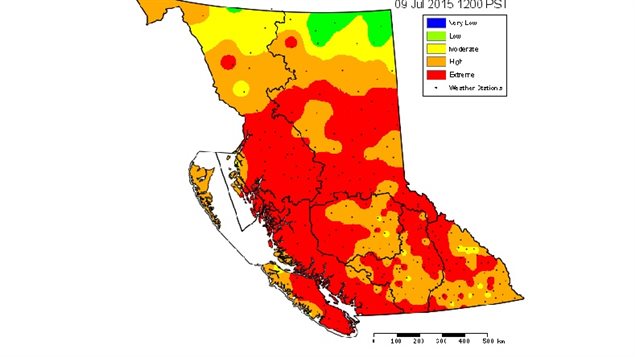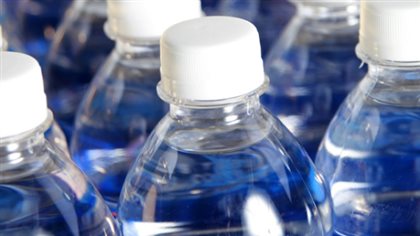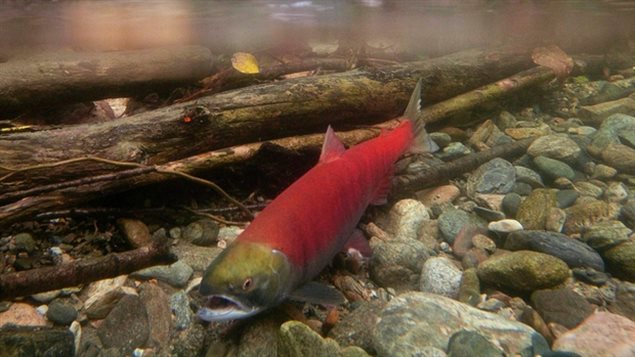While Canada’s west coast province swelters under an unusual drought and heat waver, There have been some ripple effects, beyond the multitude of forest fires.
The heat is warming rivers aided by low levels due to a low winter snowfall and very dry spring.
This is expected to have an negative effect on Pacific salmon which return to freshwater around this time of year to spawn.
Many rivers temperatures have been measured at up to 19C degrees. The Department of Fisheries and Oceans says, at 20 degrees, the water has damaging effects on the fish. The warm water has reduced oxygen levels just when the returning salmon need more oxygen for the rigourous journey upstream, over obstacles, to spawn. The juveniles also sometimes spend more than a year in important salmon rivers like the Thompson, Fraser and Nicola and the warm temperatures add increased stress on them as well.

Once the returning salmon enter the fresh water, they can’t turn back. Obervers say salmon now seem to be gathering in the bays and near river outlets waiting for cooler water.
Most salmon usually die after mating due to the stress of the return trip and spawning.
Dr. Brain Riddell, President and CEO of the Pacific Salmon Foundation is quoted on the Weather Network site, saying, “At this point, the race is on as to whether the salmon can actually find a spawning site and mate before it dies,”
As the climate changes, with warmer summers and reduced summer and winter precipitation, it could drastically affect salmon which may not be able to adapt their behaviour to changing conditions.
Reduced salmon stocks would have a wider affect on the ecosystem as many animals depend on the spring and summer migration for their own survival. Bears feed on the spawning salmon , while other species like birds and others feed on the decaying bodies of the dead salmon.
Meanwhile, the summer heat and drought has brought new criticism of water bottling operations like the giant Nestlé corporation.

While residents are being asked to conserve and face water restrictions, and the forests burn, Nestlé continues to bottle about 265 million litres of B.C. water a year.
“It’s simply scandalous that a company like Nestlé can take hundreds of millions of litres of groundwater at basically pennies at the same time as other B.C. residents are being asked to conserve water because it’s in the middle of a drought,” said Liz McDowell, campaign director of an online petition opposing the new regulations.
Nestlé –which currently pays nothing for the millions of litres of water – defends its bottling operation saying the withdrawals are not from surface water, but from the Kawkawa acquifer and have been shown to have no negative affect on the aquifer.
The Kawkawa Lake sub-watershed is near the District of Hope, where stage four water restrictions are prohibiting outdoor water activities and watering of lawns.
Starting in 2016, new laws come into effect requiring the multinational to pay $2.25 per million litres. A single litre of Nestlé bottled water in Canadian stores sells for roughly between $1.00 and $1.29







For reasons beyond our control, and for an undetermined period of time, our comment section is now closed. However, our social networks remain open to your contributions.